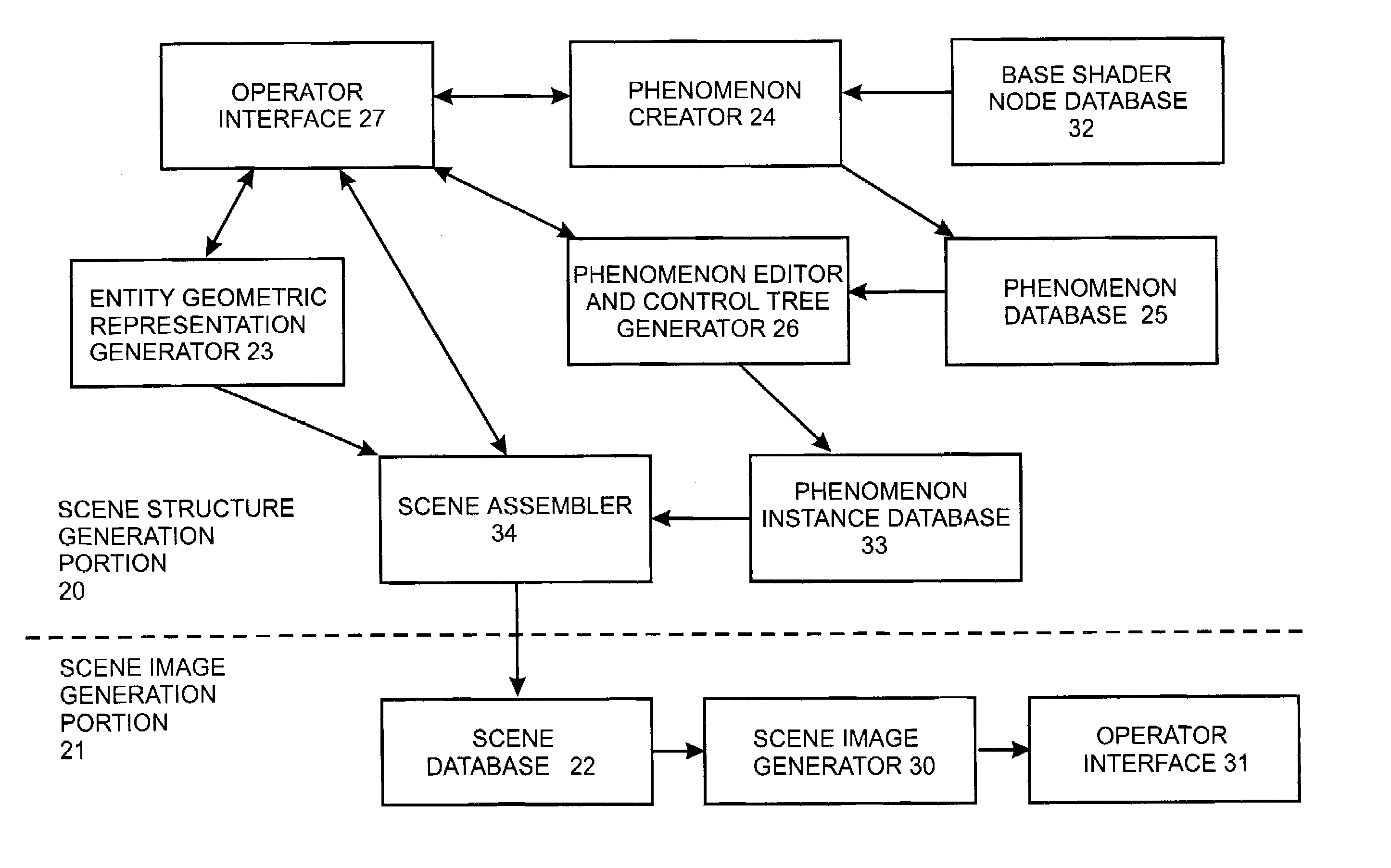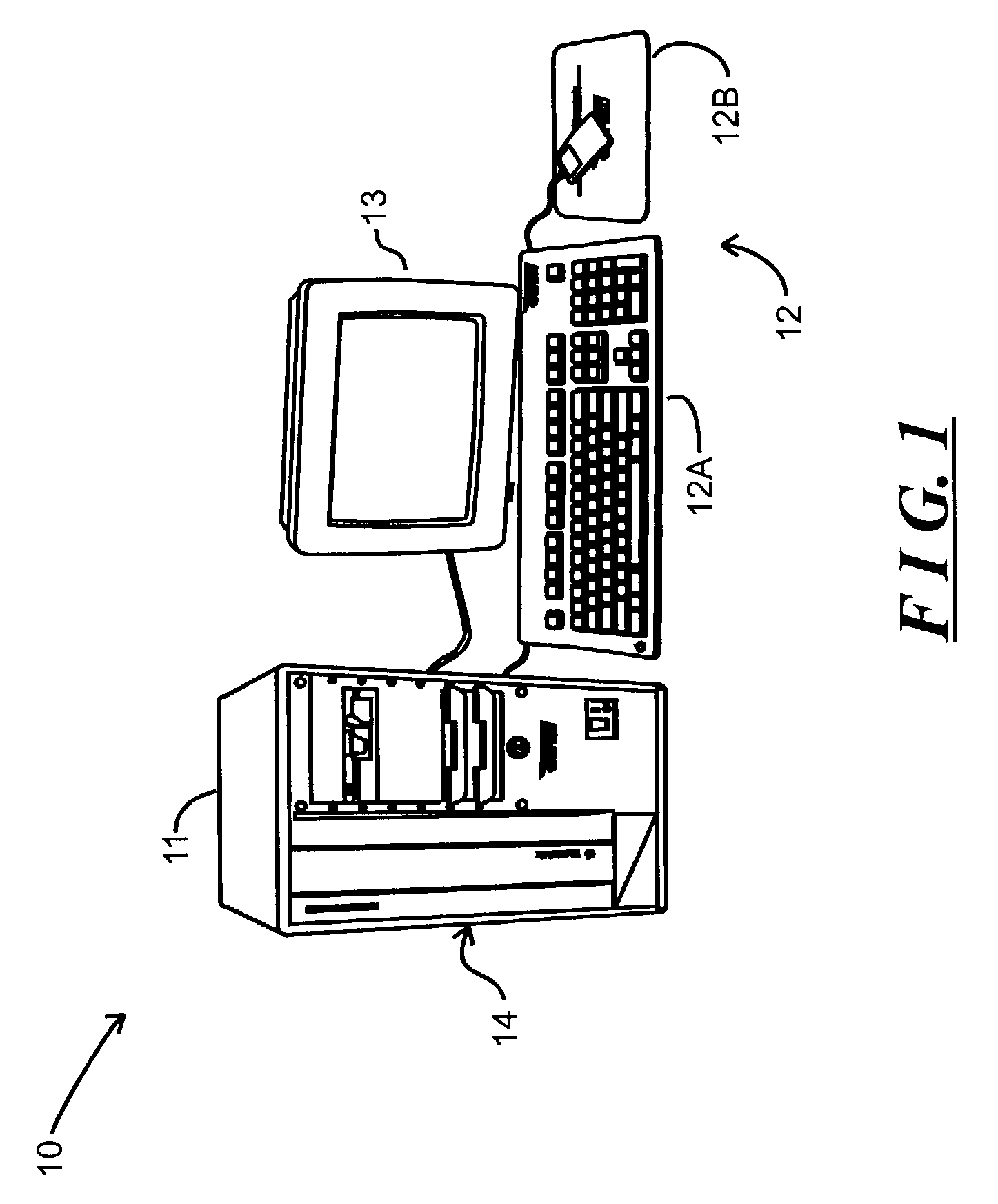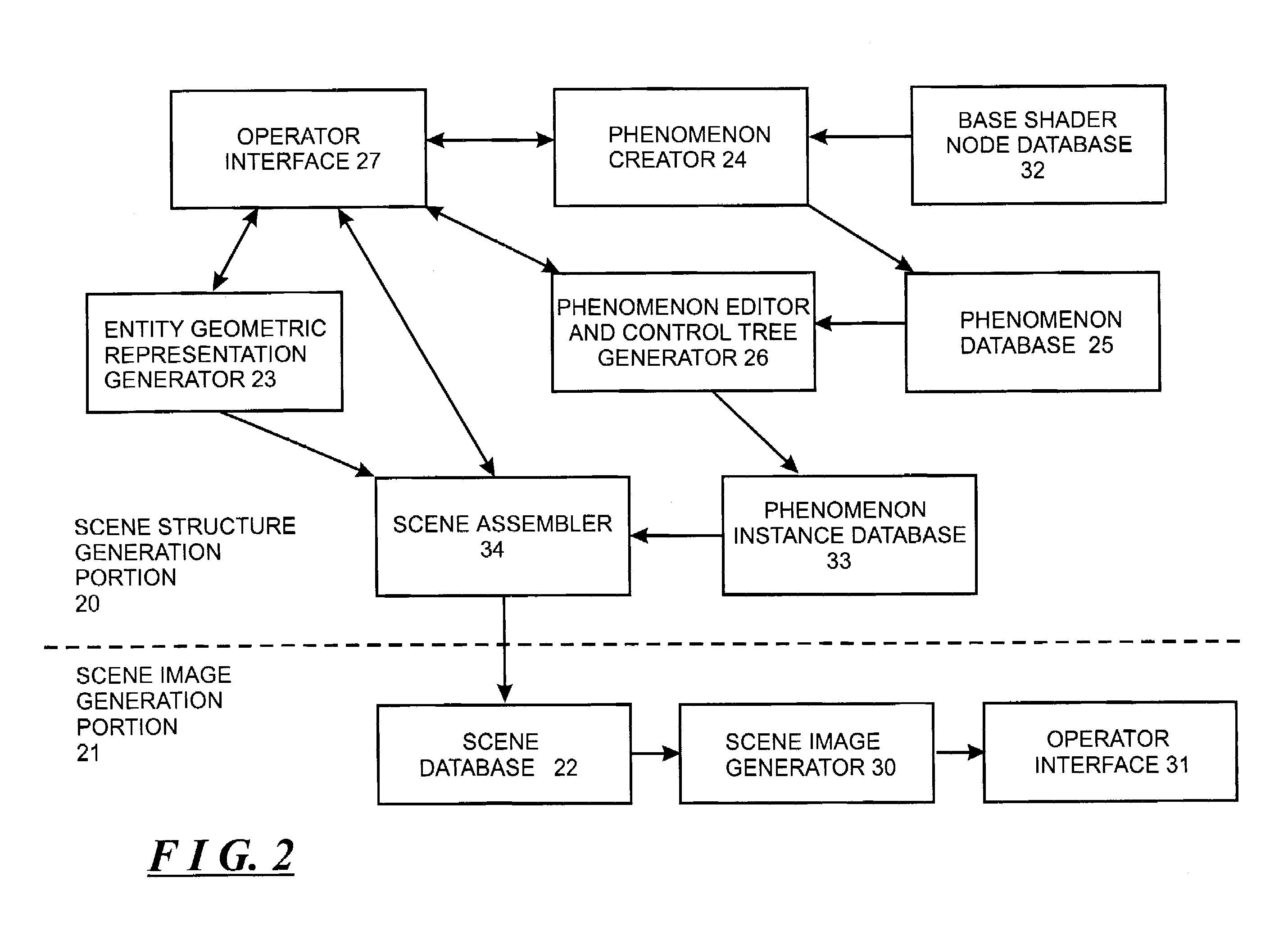System and method for generating and using systems of cooperating and encapsulated shaders and shader dags for use in a computer graphics system
a computer graphics system and shader technology, applied in the field of computer graphics and computer-aided design, can solve the problems of limiting the flexibility of shaders, limiting the ability of shaders to render features in an interesting and life-like manner, and generally not cooperating shaders, so as to improve the cooperation between shaders and correct the effect of rendering
- Summary
- Abstract
- Description
- Claims
- Application Information
AI Technical Summary
Benefits of technology
Problems solved by technology
Method used
Image
Examples
Embodiment Construction
[0020]FIG. 1 attached hereto depicts elements comprising an computer graphics system 10 constructed in accordance with the invention. The computer graphics system 10 provides for enhanced cooperation among shaders by facilitating generation of new computer graphic components, referred to herein as “phenomenon” (in the singular) or “phenomena” (in the plural), which are used to define features of a scene for use in rendering. A phenomenon is a packaged and encapsulated system comprising one or more shaders, which are organized and interconnected in the form of one or more directed acyclic graphs (“DAGs”), with each DAG including one or more shaders. The phenomena generated by the computer graphics system 10 are generated in such a manner as to ensure that the shader or shaders in each shader DAG can correctly cooperate during rendering, to facilitate the rendering of realistic or complex visual effects. In addition, for phenomena which comprise multiple cooperating shader DAGs, the c...
PUM
 Login to View More
Login to View More Abstract
Description
Claims
Application Information
 Login to View More
Login to View More - R&D
- Intellectual Property
- Life Sciences
- Materials
- Tech Scout
- Unparalleled Data Quality
- Higher Quality Content
- 60% Fewer Hallucinations
Browse by: Latest US Patents, China's latest patents, Technical Efficacy Thesaurus, Application Domain, Technology Topic, Popular Technical Reports.
© 2025 PatSnap. All rights reserved.Legal|Privacy policy|Modern Slavery Act Transparency Statement|Sitemap|About US| Contact US: help@patsnap.com



